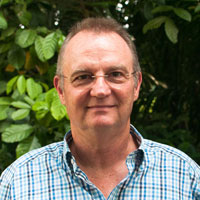
Five countries hold 70 percent of the world’s natural ecosystems, according to an article published in the journal Nature by researcher James Watson and colleagues.
In “Protect the last of the wild,” the authors urge an increase in conservation activities in a number of locations to safeguard the planet from biodiversity loss and the projected dire consequences of climate change. They raise important arguments for conservation.
A map illustrates areas in Australia, Brazil, Canada, Russia and the United States, which the authors say contain most of the world’s remaining wilderness.
These areas still contain various species at near-natural abundance, the authors state. They are reservoirs of biological diversity that provide resilience and adaptability for many plants and animals. They are also important for their carbon stores and provide fresh water to large numbers of downstream people.
The authors also note that, “So far, the contribution of intact ecosystems has not been an explicit target in any international policy framework,” citing the U.N. Convention on Biological Diversity (CBD) and the U.N. Paris Agreement on climate change as examples.
How convincing you find these arguments likely depends on how you define “intactness” and “wilderness.” This is far from simple.
The authors of the Nature commentary use eight “human pressures” indicators to identify and map regions with little human activity or impact and “a contiguous area of more than 10,000 km2.” They also create a map of “intact ocean ecosystems” using data on fishing, industrial shipping, fertilizer run-off and 16 additional indicators.
Other scientists have previously attempted comparable overviews using their own criteria. For example, Potapov and colleagues (Sci. Adv. 2017; 3: e1600821) used two criteria of “ecosystem alteration and landscape fragmentation” to identify intact forest landscapes with a minimum area of 500 km2.
We are pleased to see conservation agencies using transparent and objective approaches to prioritize their concerns and inform policymakers. Nevertheless, there are downsides to each agency developing and promoting distinct definitions. We would prefer greater efforts toward building a broader (and thus more coherent) consensus for conservation. Discordant approaches risk distraction and discord.
Concern for the world’s remaining wilderness and intact ecosystems involves many disparate views. Some may emphasize endangered communities and species, while others highlight economic benefits, the beauty of wildlands or something else. These top-down concerns are insufficient as a basis for action. Moral and practical arguments suggest that any goals must reflect and respect the views and concerns of the people who find their land and waters embedded in the whims of one definition or another.
Defining, let alone measuring, or weighing-up wilderness and its values is challenging and contentious. No place in the world has entirely escaped human impacts, whether from species introduced from elsewhere, plastics and persistent pollutants, Pleistocene extinctions, nuclear fallout, climate change, or other external forces. As a result, deciding which criteria to use to designate natural ecosystems for conservation and where to draw the line—and indeed if a line is preferable to a more nuanced mapping of intermediate values—remain debatable.
Identifying “intact ecosystems” depends on goals and choices. Most people have some personal feeling for what constitutes wilderness. We suspect too that most scientists would select different criteria, measures and thresholds to define it. Any methods that exclude important wild areas are not likely to gain wide acceptance and thus convey effective policy action.
For example, consider Papua’s Foja Mountains with its remarkable endemic biota (see Nature 439, 774; 2006) or the Cuvette Centrale in the Congo Basin, among the tropics most extensive peatlands (see Nature 542, 86-90; 2017). Both these areas span several thousand square-kilometers, are poorly explored and remain as near pristine as any tropical forests. Yet both are absent from Watson’s map. There is a danger that some policy makers may see such a map as implying that many valuable wildlands, Foja and the Congo basin included, as unimportant, and thus permit their exploitation.
Sharp-lined definitions are problematic in these contexts. Is it really reasonable that an area of 9,999 km2 does not count while one of 10,001 km2 does? Such priority setting favors simplicity over substance. Such all-or-nothing thinking is, we suspect, a particular concern in motivating conservation in human modified habitats (see Biotropica 42, 566–568; 2010).
Conservation is a societal goal and incoherent definitions are a poor basis for building consensus and promoting action. If the concepts of wilderness and of intact nature are to maintain their relevance, we require an inclusive approach. Many people may indeed support vast wild spaces, but many will emphatically favor smaller richer ones too.
There is general agreement that global targets are needed to protect wilderness areas, preserve biodiversity, address climate change and achieve sustainable development. However, although there is room for modifications and refinements, frameworks already allow us to identify global conservation priorities. Creating multiple parallel targets muddies and complicates these efforts.
For example, the Aichi Biodiversity Targets provide a framework for the Convention on Biological Diversity (CBD). It was signed by 150 governments in 1992 to protect plants and animals, ensure food security and prevent climate change.
Conservationists can achieve more when they work together.
Christopher Martius (principal scientist and team leader of climate change, bioenergy and low carbon development, CIFOR)
Paulo Cerutti (senior scientist, CIFOR)
Douglas Sheil (professor, Norwegian University of Life Sciences and research associate, CIFOR)
We want you to share Forests News content, which is licensed under Creative Commons Attribution-NonCommercial-ShareAlike 4.0 International (CC BY-NC-SA 4.0). This means you are free to redistribute our material for non-commercial purposes. All we ask is that you give Forests News appropriate credit and link to the original Forests News content, indicate if changes were made, and distribute your contributions under the same Creative Commons license. You must notify Forests News if you repost, reprint or reuse our materials by contacting forestsnews@cifor-icraf.org.














